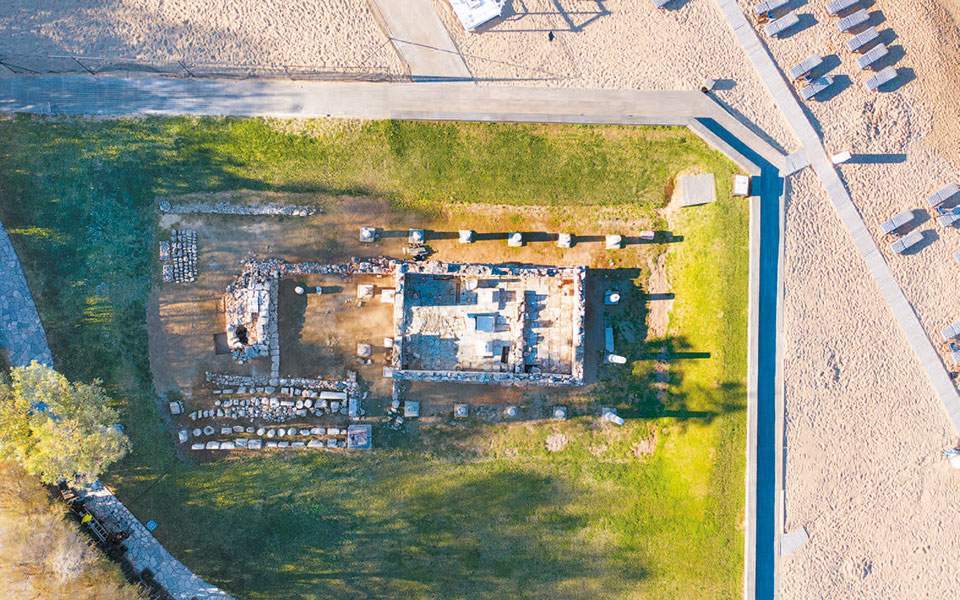I first caught a glimpse of it through a window at the entrance to the Astir resort’s beach club in Vouliagmeni, on Athens’ southern coast.
That’s why the window was there: to allow the public to admire the ancient temple without trying to talk their way into the resort for free on the premise of being archaeology buffs.
My second visit was much more organized and is what anyone wanting to visit the archaeological site has to do: I got permission from the management of the Astir Palace resort and then waited for a guard to take me to the location.
It was worth it, because the 6th century BC Temple of Apollo Zoster was the most important temple in the Archaic deme of Aixonides Halai.
The main hall of the sanctuary is around 10 meters long and all four of its walls survive.
The temple was built right next to the water and small plants sprout among the three marble pedestals that once held the statues of the worshipped gods – Apollo, Leto and Artemis – the priest’s throne and the altar.
The Temple of Apollo Zoster came to light accidentally in the early 20th century, when a group of children from the nearby Vouliagmeni Orphanage discovered sections of its walls and inscriptions while playing on the beach.
The inscriptions allowed experts to identify the monument, thus spurring excavations to begin in 1926. The deeper the archaeologists dug, the more evidence they uncovered that could be cross-referenced in Strabo and Pausanias.
The latter, in fact, is responsible for attributing the temple’s name to the myth that this was the spot where Leto – pursued by the angry Hera and sensing that she was soon to give birth to twins Apollo and Artemis – loosened her girdle, or zoster.
The archaeologist Konstantinos Kourouniotis (1872-1945) argued that the temple is named after Armed Apollo, or Zostirios, indicating the god geared (“zosmenos” or strapped) for war.
However, it is more likely that the name derives from the shape of the narrow peninsula on which the temple is located, like a girdle or “zoster.”
There’s a signpost in Greek and English providing some of this and other information about the site in front of the temple, which comes under the jurisdiction of the Ephorate of Antiquities for Piraeus and the Islands.
Up until 2011, when the area was drained, the temple sat in around 20 centimeters of water, surrounded by what can only be described as a marsh.
New studies are currently being carried out on the monument’s restoration and preservation in such difficult terrain.
One of the plans is to create a separate entrance to the site so that visitors do not need to go through the beach club.
The project will be carried out by Astir Palace Vouliagmenis SA, in cooperation with the ephorate.
“We are in constant communication with the Ministry of Culture in order to showcase the temple, as well as to protect and showcase other antiquities in the area that are under the supervision and guardianship of Astir,” says the company’s deputy director for development, Konstantinos Mitsios.
The section of the Astir resort on the hill of the Vouliagmeni peninsula has been listed as an archaeological site since 2013.
The area was an important center of worship in ancient times, while recent infrastructure work for the Four Seasons hotel revealed more Roman and Hellenistic antiquities.
This article was first published on ekathimerini.com











